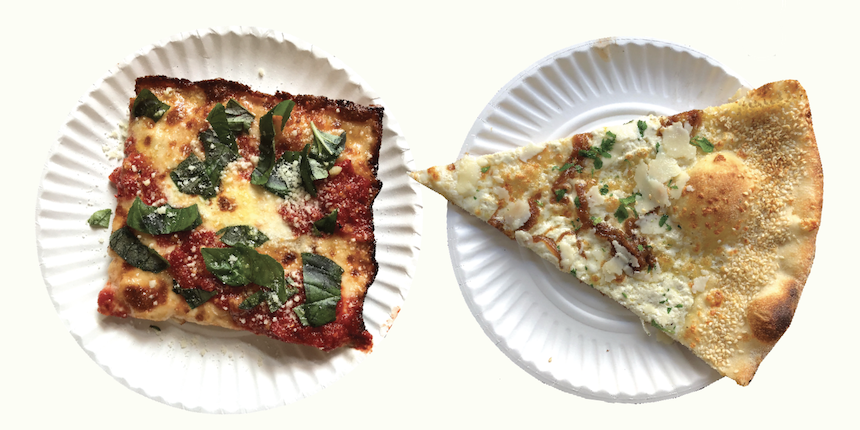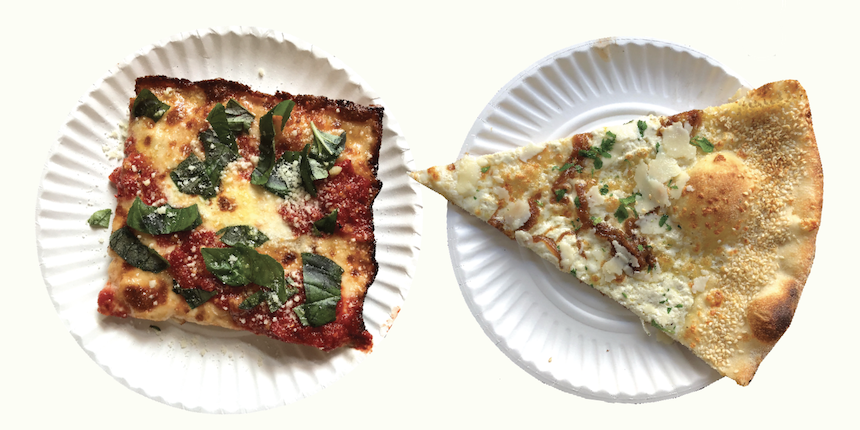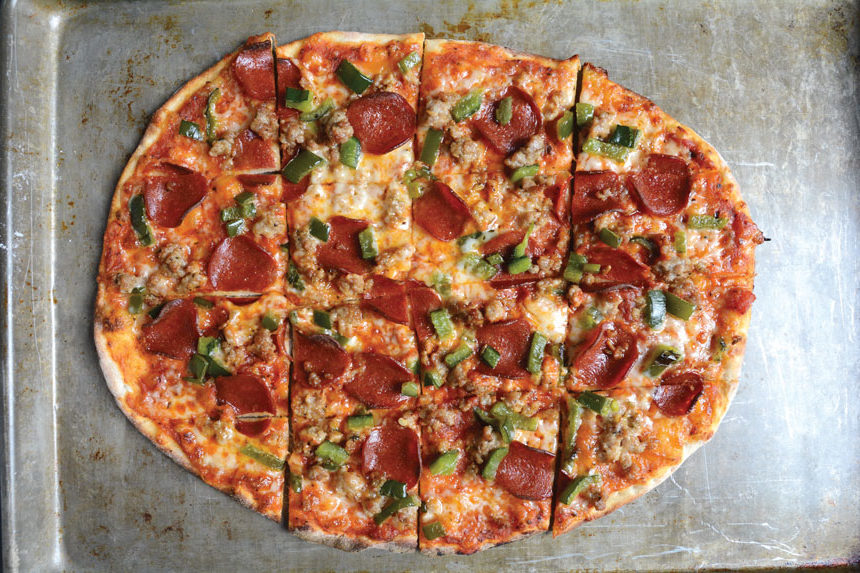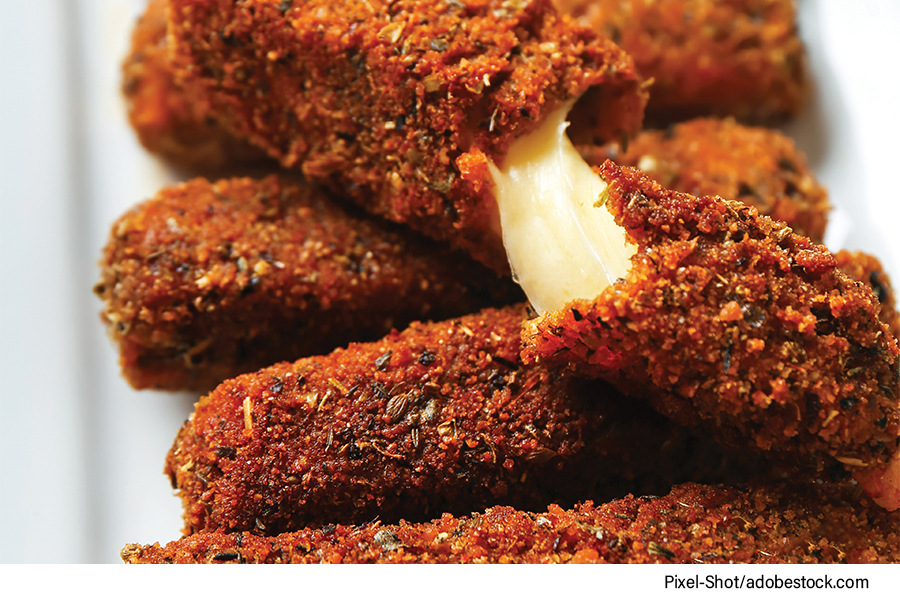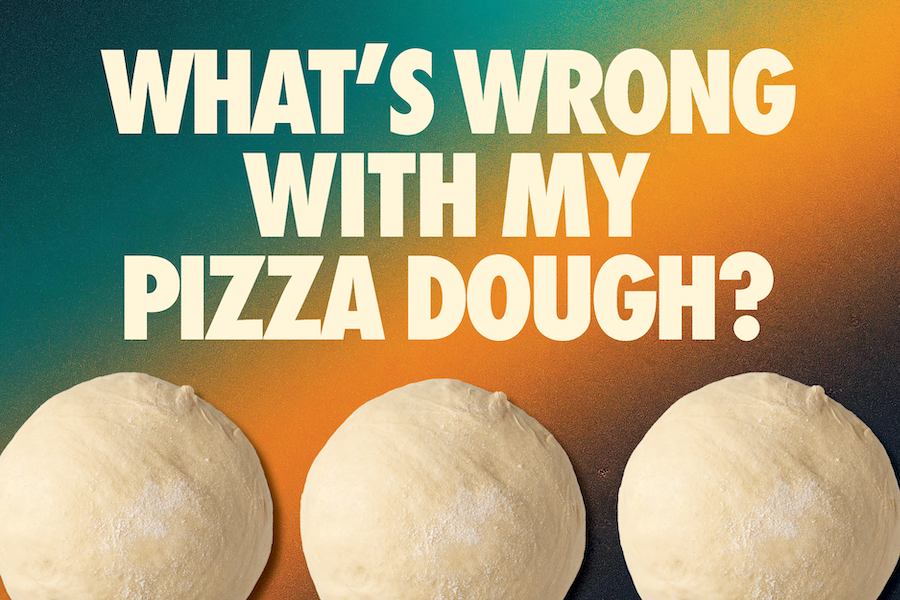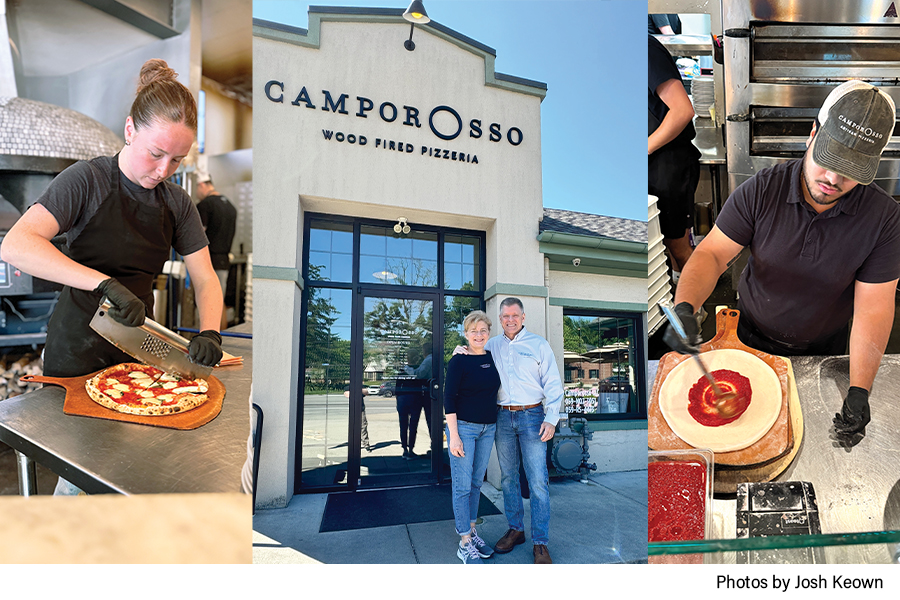Maximizing your foundational awareness of pizza crust
“The greatest danger occurs at the moment of victory.” — Napoleon Bonaparte 1769-1821
Every year in pizza competitions, I see the one blaring mistake at the most crucial time. An excellent and talented pizza maker gets to the finals. This one last pizza will put them in a category above all others and victory is in sight. Then, in the dizzying haze of this almost triumph, they do something they would never do in their pizzeria. They put more and more cheese, followed by more toppings… followed by more garnish. Their pizza crust is now flattened by the weight of overtopping. This pizza, born of nervous trepidation, usually never wins at the top tier because the judges end up with a lapful of cheese and toppings that the crust just couldn’t support.
The Best is yet to Crumb
We’ve all encountered the dilemma of creating a crust to accommodate heavy toppings or multiple sauces or cheeses. When you have heavy root vegetables, pureed or not, or beautiful summer tomatoes filled with flavorful juices, it takes a plan to make a great crust that won’t wilt when a slice is picked up. Topping a pizza is one of the most pivotal moments before, during, and after the bake because this is the integration of assets—the combination of the strength of your pizza dough and what you top this crust with. Too much hydration, wet toppings, weighty meats and cheeses, and insufficient thought about how the heated foundation will support all these assets can lead to your downfall. To avoid this, let’s look at the styles of pizzas and the topping support they offer.
- Thin and crispy pizza: Low tolerance for weighty toppings unless an extremely low-hydrated, high-gluten dough is baked at medium temperatures, creating a hard, crisp crust that will not “flop” or crack. Examples are the East Coast Hot Oil pizzas, the Roman Scrocciarella and the St. Louis thin. A lot of these styles are made with less sauce and cheese and cut in the Chicago “Tavern Style” squares to accommodate multiple toppings.
- Medium thick brick-oven crust: Mid-level tolerance for heavy toppings depends upon hydration. Below 70 percent and a lower temperature bake at 500 F will dry a dynamic high-gluten crust out enough for plenty of sauce and cheese. The more steam remaining in the crust will soften the dough, and higher heat will only crisp the outside of the cornicione (crust.) If you try drying out the gluten scaffolding in the center at this high temperature, it will only burn the outside.
- High Hydration Crusts: Believe it or not, high hydration crusts are the perfect platform for dressing with multiple toppings. Pizzas like the Pizza in Teglia are baked in pans because of that high moisture, but they create a crisp crust and large cell structure at temperatures in the mid 500 F range. These pizzas also have a lot of oil in the mix because the oil coats the gluten strands eliminating moisture saturation. This technique creates strong alveoli, or “lungs” when filled by carbon dioxide. Many high-hydration pizzas are par-baked much in the same pans that the smaller-celled Sicilian Pizzas are, like the wonderful Sfincione.
Athletic Supporter
To run with the big jocks in the pizza world, you’ll need to strap in and make an excellent crust for each individual pizza need. Creating a foundation of a cooked wheat crust enables further topping that will transform your flatbread into a pizza. Throughout the world over time, many ways to do this have been integrated into our history. Several components and disciplines ratcheted together can help strengthen your dough to hold more toppings. Here are a few.
- Gluten strength. The stronger the gluten net, the more scaffolding you’ll have to support your toppings (but) only with the proper amount of hydration (and) with the extensibility (w factor) to make that scaffolding strong. Flours available have a protein strength of up to 14 percent. These strong flours can make good structure either in a pan or on the bricks alone.
- The Mix. Ensuring you get the most strength out of your flour also depends on how much water the gluten strands absorb. Higher hydration doughs can be handled effectively with the proper fermentation and mixing and usually are dynamically baked in large pans like Pizza in Teglia, or pizza by the cut. There are a few mixing secrets, like using a slow-and-low speed to ensure the gluten is strong. The “Autolyse Method” is also designed to enhance the strength of dough. It is a procedure of letting your already mixed dough rest from 20 to 60 minutes without salt. This allows for a head start at creating a strong gluten net.
- The Bake. The heat and baking time in the oven is also a factor in producing a stronger crust. Take the typical 00 flour mix of the Neapolitan kind. If you cook it at 900 F for 90 seconds, it becomes light as air. If you cooked it at 500 F for 15 minutes, it will be crusty and dense but very chewy and strong. I use a typical Sicilian or Roman partial bake for all my heavily topped crusts as a first stage. It takes a lot of guesswork out of a busy baking session.
- The Sauce Boss. Many pizza makers think that sauce needs to go onto raw dough; this may produce a “gum line,” a raw dough purgatory that doesn’t get enough heat to cook. It lies between the cheese and dough and is known for lacking digestibility. Other pizza makers sauce their pies after the bake, like Detroit “Red Top” pizzas. Some pizza pros will bake their pizzas in stages, like the Roman Pizza in Teglia, where the crust is par-baked and then topped in stages.
- Cheese to Please. If you’ve got a heavy-duty pizza crust and plan on loading it up, the weight of too much mozzarella cheese can overwhelm that pie. You may be able to enhance your pizza with less but stronger cheeses like Gorgonzola, Gruyere, Piave Vecchio, Feta, Asiago, Parmigiano, or Manchego.
After a lot of trial and error, you’ll connect the dots to create the perfect structure to support your masterpiece!
John Gutekanst owns Avalanche Pizza in Athens, Ohio.
>> Explore answers to more common pizza dough questions in Troubleshooting your Pizza Dough: What’s wrong with my pizza dough? <<


